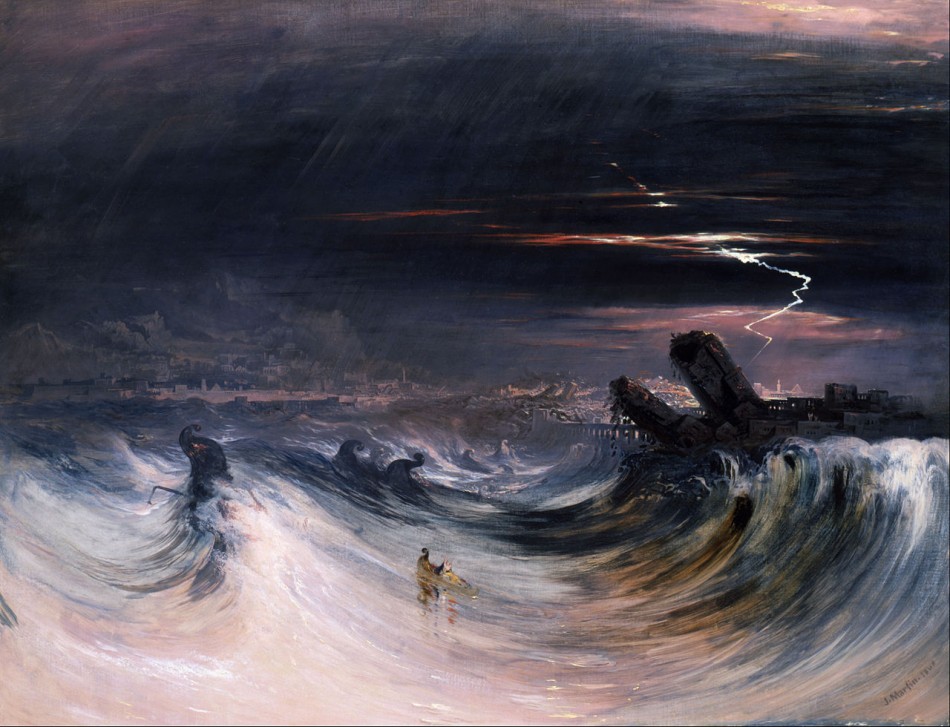John Martin, Destruction of Tyre. 1840. Oil on Canvas, 1095 × 838 cm
From Google Cultural Institute:
Teetering between the supernatural and the sensational, John Martin’s apocalyptic scenes play to Edmund Burke’s concept of “sublime terror.” The idea of the sublime—often expressed by awe- or fear-inspiring images of Nature, “Gothic” supernatural horrors, or divine retribution—had been taken up by many British artists and poets in the late 1700s to mid-1800s, including William Blake, Lord Byron, and even J.M.W. Turner (see 1926.53). Martin specialized in vast landscapes or fantastic architectural settings peopled by tiny figures struck down by God’s wrath or struggling against the overwhelming power of Nature. Here he paints a lurid vision of the biblical account of Ezekiel’s prophecy warning of the destruction of the city of Tyre. Towers and buildings topple as waves pound them; lightning strikes; ships sink; and a lone, richly dressed woman in an ornate boat raises her arms to the sky in terror and lamentation. Once a wealthy seaport on the coast of Lebanon, Tyre is described in Ezekiel 26 as bringing the vengeance of God upon itself for turning against Jerusalem. Martin seems to take verse 19 as his inspiration: “For thus saith the Lord God: When I shall make thee a desolate city, like the cities that are not inhabited; when I shall bring up the deep upon thee, and the great waters shall cover thee….”





